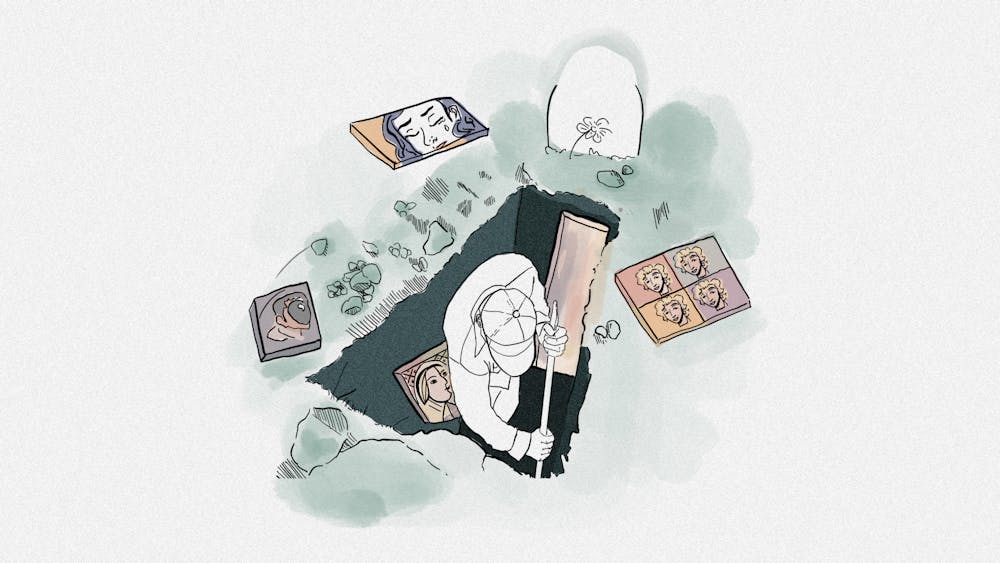The desire to stay relevant in our dynamic society is at the forefront of almost everyone’s mind, both personally and professionally. We are constantly re–inventing ourselves, looking to bring in “fresh blood” to stay current. In the art market, artists emerge rapidly. There’s always something new and interesting to be seen. So, how can it be that Gagosian, the largest and most well–regarded art gallery, is exhibiting deceased artist’s work at five of their 19 gallery spaces? Why does it keep trying to sell us something we’ve already seen before?
Founded by Larry Gagosian in 1980, Gagosian specializes in the curation and sale of modern and contemporary art. Bearing a staff of over 300 people, 106 signed artists, and 19 galleries internationally, its impressive breadth dominates the gallery scene. It represents living legends like Sally Mann and Takashi Murakami, but the majesty of Gagosian really lies in the deceased artists on their letterhead.
When the average art admirer looks at their overwhelmingly impressive list of artists, names like Andy Warhol, Pablo Picasso, and Helen Frankenthaler jump off the page. These names, well–known and highbrow by nature, elevate the status of Gagosian as a gallery. This may be, in part, why Gagosian is showing their deceased artists' work at a number of their gallery locations. Currently, in four of its seven New York City galleries, it is exhibiting the work of Japanese painter Tetsuya Ishida, ironic abstract artist Ashley Bickerton, and pop artist Roy Lichtenstein, whose exhibitions inhabit two of their NYC galleries. These artists, all critically acclaimed and culturally compelling, passed in 2005, 2022, and 1997 respectively. Gagosian in Basel, Switzerland, known as the art mecca, is currently hosting an exhibition of the late environmental sculptor Christo, who passed away in 2020.
While the originality of these artists' work is certainly still worthy of exhibition, they’ve already had their time in the limelight. There are heaves of talented artists that deserve the global spotlight and recognition that signing with Gagosian brings. Emerging artists like Issy Wood and Narumi Nekpenekpen, who are making waves at Art Basel and Frieze, are signing their loyalties to other prominent but less colossal galleries. Many other emerging artists are already ruling galleries null, acknowledging the unnecessary bridge of a third party to sell their art. With artists gaining notoriety through social media, their means of sale have evolved to be as simple as a DM. No heavyweight gallery name necessary. Larry Gagosian got his start with his impressive instincts and keen understanding of the market, but he’s letting these future art legends slip through his fingers.
This all begs the question: Why show the deads’ art? It’s because these artists harness respect that trickles down to Gagosian—and in a time where people are rejecting the supercilious nature of high art, respect is exactly what they need to stay afloat. When the masses walk down the streets of NYC and see the name “Roy Lichtenstein” splashed across Gagosian's windows, they can identify with it—they may even walk in. They register the scale of the gallery to covet such a name. This strategy, while disappointing to aspiring artists, is conventionally effective. Gagosian has placed itself on a pedestal of high art, on which it is fervently respected.
This may keep Gagosian popular now, but it certainly isn’t keeping it relevant. If Gagosian is only interested in exhibiting the work of deeply respected art legends, it isn't creating any for itself in the future. Soon enough, we will grow tired of what we have already seen, and younger audiences won’t identify with the names at the top of Gagosian's roster.
It’s a damn shame Gagosian isn’t investing in the staggering potential of young artists, not only for the future of the art community but also for the longevity of the gallery. However, maybe it's better for artists to attach themselves to other galleries, as it is clear that Gagosian’s strategy to stay on top is only hurling it down a path of eventual obscurity.

